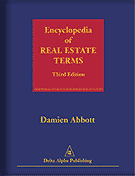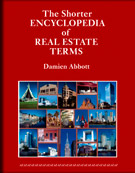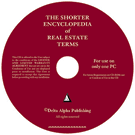fixture
An article of personal property that has been so attached or wrought into land, or a building on land, that it becomes part and parcel of the land and may only be removed with the consent of the owner of the land. An article of personalty that has been so attached to real estate as to become a part thereof, even though it may retain its separate physical identity. Any chattel that has been so affixed to land that, in the view of the law, it has taken on a nature that makes it part of the land, loses its character as a chattel; it becomes a part of, and passes with, the ownership of land (thus, in the US, a fixture is referred to sometimes as a 'chattel fixture'); "a fixture is a former chattel which, while retaining its separate physical identity, is so connected with the realty that a disinterested observer would consider it a part thereof." 5 Am.L.Prop., § 19.1. Ultimately a fixture becomes the property of the owner of the freehold or fee interest, unless there is clear evidence to the contrary (South Staffordshire Water Co v Sharman [1896] 2 QB 44; Commercial Finance Co. v. Brooksville Hotel Co., 98 Fla 410, 123 So 814, 64 ALR 1219 (1929); In re Walker Bin Co., 9 F Supp 367, 369 (DC NY 1935)). The principle that an item secured to the land may become part of the realty is recognized in Roman law (by accessio); in the civil law; and, since the 16th century, has been part of the common law. Once an item becomes a 'fixture', it may not be removed by an occupier or a tenant of land, even though initially it was the property of that party; unless the consent of the owner, or a person who has contracted to be the owner, has been obtained or unless there is a statutory provision which overrules the dictum quidquid plantatur solo, solo cedit, 'whatever is affixed to soil, belongs to the soil'.
At common law, in determining whether an item has become a fixture, it is necessary to consider (a) the purpose, intent or object of the annexation; and (b) the degree or manner of annexation to the land or a building thereon. There must be a union between the chattel and the land; a lack of physical attachment mitigates against an item being considered a fixture However, an object resting on the ground by its own weight alone can be a fixture, provided it is clearly intended to form an adjunct to the soil or a building thereon (Snedeker v. Warring, 12 NY 170, 175 (1854); Holland v Hodgson (1872) LR 7 CP 335; Berkley v Poulett (1976) 241 EG 911). Thus, the 'object and purpose of annexation' test is more likely than the 'degree of annexation' test to be decisive. When the intention is to improve the property permanently the personal property becomes a fixture, but if it is well secured purely to ensure its proper safety, use or better enjoyment it is likely to remain a chattel "the question is not whether the thing itself is easily removed but whether it is an essential part of the building itself." D'Eyncourt v Gregory (1866) LR 3 Eq 382, 396. Nonetheless, the onus must be on the person who affixed it to show that it was intended all along to continue as a chattel, or (especially if the chattel is fixed only by its own weight) for the owner of the land to show that it has ceased to be a chattel (Holland v Hodgson, supra).
In the final analysis, what constitutes a fixture is a question to be determined by the facts in each case. An item fixed solely by its own weight generally remains a chattel; and an item molded into a scheme of ornamentation, so that the scheme would be wholly inadequate without it, usually becomes a fixture. However, both these propositions may be reversed if that would lend better credence to the predetermination of the parties. Thus, items fixed purely for domestic ornamentation may be removed before the end of a lease, or prior to an unconditional contact of sale, without notice to the landlord or prospective purchaser, but trees and plants are an essential part of the land and should not be removed without prior agreement.
In the US, whether an item may be considered to have become a fixture may be said to depend on "the facts and circumstances of the particular case, including the relationship of the parties, and is determined by the united application of the requisites, annexation, adaptation and intention." 36A C.J.S., Fixtures, § 1. As a rule, the principles have followed the common law (which in turn are not dissimilar to Roman and civil law), although the courts have tended (since Teaff v. Hewitt, 1 Ohio St 530 (1853)) to place more emphasis on the question of intention as a test in deciding whether an item has become a fixture and (as in English law) the mere fact of annexation to land or buildings has lost some of its primacy. In most jurisdictions, the factors for determining whether an item has become a fixture may be summarized as: (i) the mode and sufficiency of annexation (Crane Erectors & Riggers v. La Salle Nat'l Bank, 125 Ill App.3d 658, 466 NE.2d 397 (1984); George v. Commercial Credit Corp., 440 F.2d 551 (7th Cir. Wis 1971)); (ii) the purpose and intent behind the annexation, especially whether annexation is necessary for the proper use of the item (Am. Tel. & Telegraph Co. v. Muller, 299 F Supp 157 (D SC 1968); WO Co. v. Benjamin Franklin Corp., 562 F.2d 1339, 1344 (1st Cir. NH 1977)); (iii) the degree to which the item has become adapted to be used as part of the property (Manufacturers Bank & Trust Co. v. Lauchli, 118 F.2d 607 (8th Cir. Mo 1941)); and (iv) the ease with which the article may be removed without injury to the premises (First Nat'l Bank v. Whirlpool, 517 SW.2d 262 (Tex 1974); Allstate Ins. Co. v. County of Los Angeles, 161 Cal App.3d 877, 207 Cal Rptr 888 (1984)). Thus, such items as a kitchen cabinet, an air-conditioning unit or a gas or electric range (even though such items may be easily removed) are usually installed as an essential item to an apartment and, therefore, are clearly intended to remain as fixtures (Mortgage Bond Co. v. Stephens, 181 Okla 419, 74 P.2d 361 (1937); State Mutual v. Trautwein, 414 SW.2d 587 (Ky 1967); Anno: 64 ALR 1222: Refrigerators as Fixtures; Anno: 43 ALR2d 1378: Air-conditioning Plant, Equipment, Apparatus, or the Like as Fixture; Anno: 57 ALR2d 1103: Electric Range as Fixture). Wall-to-wall carpeting is not necessarily a fixture, provided it can be removed without damaging the property and was not intended to become part of the property (Hartford Fire Ins. Co. v. Balch, 350 P.2d 514 (Okla 1960); cf. Haverfield Company v. Siegel, 366 SW.2d 790 (Tex Civ App 1963); Anno: 55 ALR2d 1044: Carpets, Linoleum, or Like as Fixture). Other items that have been held to be fixtures include: chairs fixed to the floor of a theatre; wall beds; a chair lift at a ski resort; and a solar water heater panel. Most jurisdictions accept that items affixed for trade or manufacture can be removed at the end of the lease by the tenant (Anderson-Tully Co. v. United States, 189 F.2d 196 (5th Cir. Miss 1951); Moss v. Rocky Point Park, Inc., 103 A.2d 72 (RI 1954)). In this respect, most jurisdictions do not follow the common law view that an agricultural fixture is not a trade fixture, but consider any such item like any other trade fixture and allow its removal at the end of a lease, unless it is permanently fixed to the land and is clearly intended as an integral part of a farm. American courts increasingly give greater significance to modern expectations and accepted practices than to the older English rules of 'fixing'.
In English law, items that have been held to remain chattels include light bulbs; a valuable tapestry fixed with battens to the wall of a private residence solely for its protection; an ornamental chimney piece; ornamental paneling; seats bolted in the auditorium of a theatre; an army hut bolted in sections to a concrete foundation. A plumbed in washing machine, a gas fire, and a bedroom headboard must each be fixed for its proper enjoyment, but none of these is intended normally to enhance, or become an essential part of the freehold. Items held to have become fixtures include a tapestry set into the wall as part of the design and decoration of a house; seats secured to the floor of a cinema hall; 436 power looms installed in a mill; door and window fastenings; gratings to sinks and gullies; and statues and stone garden seats secured by their own weight but forming part of a formal garden design. Thus, there are no hard and fast rules that may be used to decide if a chattel has become a fixture, as Lord Lindley said in Reynolds v Ashby & Sons [1904] AC 466, 473-74 (HL): "My Lords, I do not profess to be able to reconcile all the cases on fixtures, still less all that has been said about them. In dealing with them attention must be paid not only to the nature of the thing and to the mode of attachment, but to the circumstances under which it was attached, the purpose to be served and … to the position of the rival claimants to the thing in dispute". However, since that date the common law precedents have established five general rules, which are well enumerated in Canada as: (i) articles attached only by weight are not fixtures, unless intention or purpose indicates otherwise; (ii) annexation favors the determination that an item is a fixture; (iii) degree and object of the annexation may patently show the change in the nature of a chattel; (iv) intention is important where it flows from (iii); and (v) the tenant has a right to remove 'trade fixtures' (Stack v T Eaton Co (1902), 4 OLR 338 (Can); Reid v Smith (1906) 3 CLR 656 (Aus); MacMillan Bloedel Ltd v Sunshine Coast Assessor (1982) 19 MPLR 204, 210 (BC Can)).
Even when a chattel has been so affixed to premises so as to be classifiable as a fixture, it may be possible for the person who fixed it to remove it because of (a) a covenant or agreement with the landowner; (b) a common law rule; or (c) a statutory provision. Thus, at common law, a fixture attached to land or a building for the purpose of a tenant's trade or business – a 'trade fixture' – is considered prima facie to be removable by the tenant at the end of a lease–it is presumed that there is no intention to make the 'trade' fixture a permanent part of the realty (Poole's Case (1703) 1 Salk 368, 91 Eng Rep 320; Fisher v Dixon (1845) 12 Cl & F 312, 8 Eng Rep 1426 (HL); Wiggins Ferry Co. v. Ohio & Mississippi R. Co., 142 US 396, 12 S Ct 188, 35 L Ed 1055, 1063 (1892); Shields v. Hansen, 201 Wis 349, 230 NW 51, 52 (1930)). Items that a tenant has a right to remove (either because they are installed for convenience, as a trade fixture, or as an agricultural tenant's fixture) may be referred to as 'tenant's fixtures', and those that he may not remove, whether fixed by the landlord or the tenant, may be referred to as 'landlord's fixtures'.
At common law, any fixtures that a tenant has a right to remove must be taken out of the premises during the term of the lease, unless there is an agreement with the landlord to the contrary. Accordingly, at the end of a lease, when a tenant leaves and gives up any right to possession, all fixtures from that time forth become the property of the landlord (Pugh v Arton (1869) LR 8 Eq 626; Barff v Probyn (1895) 64 LJ QB 557, [1895-9] All ER Rep 1038; 51C C.J.S., L & T, § 397), whether they were affixed so as to become part of the realty, or whether they were fixed for the tenant's enjoyment or for trade purpose. However, if the tenant holds over (either by agreement or statutory right), or if the tenancy is renewed, the tenant has a right to remove his fixtures until he finally gives up possession (New Zealand Government Property Corporation v H M and S Ltd [1982] QB 1145, [1982] 262 EG 765, [1982] 1 All ER 624 (CA); Lilenquist v. Pitchford's, Inc., 525 P.2d 93 (Or 1973); 35 Am.Jur.2d., Fixtures, § 42). At common law, (a view still supported reluctantly by the English courts) once a lease has expired all rights of the tenant to remove any fixture also expires (Pugh v Arton, supra; Re Palmiero: debtor 3666 of 1999 [1999] 38 EG 195, 196) In the US, in some jurisdictions, after the end of a tenancy that was held for an uncertain duration (such as a tenancy at will), a reasonable period of time is allowed for the removal of fixtures; but not if a notice to vacate is of sufficient duration that the tenant could have removed the items during that period (36A C.J.S., Fixtures, § 41g).
A freeholder may remove any item from his property; but once he has contracted to sell the land he may only remove items that are clearly chattels, unless he expressly agrees to the contrary. English statute law provides that a conveyance of land is deemed to pass all fixtures (but not chattels) to the purchaser, unless an item is expressly reserved by the vendor (Law of Property Act 1925, s. 62(1)); as does a transfer by will (Re Whaley, Whaley v Roehrich [1908] 1 Ch 615)—this applies to items that would, as between landlord and tenant, be considered as tenant's fixtures.
In the US, a sale of land generally includes any permanent fixtures, unless an item is expressly excluded; although "there is no general rule as to what personalty will fall within a provision of a land contract covering personal property on, or attached to, or used in connection with the premises, since such a matter is a question of intent as disclosed by the particular instrument." 77 Am.Jur.2d., Vendor and Purchaser, § 99, p. 193 (Anno: 97 ALR3d 1220: Damages—Vendor's Removal of Property).
A mortgagee's right to land includes fixtures annexed thereto, even though they are not specified in the mortgage deed, and the mortgagee acquires a right to items annexed by the mortgagor whether annexed before or after he takes possession; although this rule normally excludes items that would be 'tenant's fixtures' (Longbottom v Berry (1869) LR 5 QB 137; Holland v Hodgson, supra; Standard Oil Co. v. La Crosse Super Auto Service, 217 Wis 237, 258 NW 791 (1935); Anno: 99 ALR 69: Fixtures—Filling Station; Metropolitan Life Ins. Co. v. Kimball, 163 Or 31, 94 P.2d 1101 (1939)).
In the US, the Uniform Commercial Code (which deals primarily with commercial transactions and goods and not real estate) stipulates that "goods are 'fixtures' when they become so related to particular real estate that an interest in them arises under real estate law" UCC § 9-313(1)(a). The Code deals with the priority of 'security interests' in goods and the position when they become fixtures. However, the code expressly excludes "ordinary building materials incorporated into an improvement on the land" UCC § 9-313(2). The Code provides that goods may retain their chattel nature in respect of chattel financing, and therefore their priority as regards creditors, if they are not integrally incorporated into the real estate. Also, the code sets out priority requirements as between a real estate mortgagee and a holder of a purchase-money security interest in the 'chattel' that has been attached to the realty. This provision of the Code has been statutorily adopted in some states, although it has been significantly modified in many states.
See also accession, agricultural tenant's fixture(Eng), appurtenance, immeuble, compensation for improvements, constructive annexation, emblements, financing statement(US), mobile home.
Anno: 17 ALR3d 1381: Insurance—'Fixtures'.
R. Kratovil, Fixtures and the Real Estate Mortgage, (1948) 97 U. Penn. L. Rev. 180, 210; (1957) 6 Kan L. Rev. 66.
R.J. Werner and R. Kratovil. Real Estate Law (10th ed. 1993), Ch. 3 'Fixtures'.
G.S. Nelson and D.A. Whitman. Real Estate Finance Law (3rd ed. 1994), §§ 9.5-9.7.
G.J. Siedel and J.K. Cheezem. Real Estate Law (4th ed. 1999), pp. 31-58.
M.R. Friedman. Friedman on Leases (4th ed. 1997), Ch. 24 'Fixtures'.
35 Am.Jur.2d., Fixtures, §§ 1-131.
36A Cor.Jur.Sec., Fixtures, §§ 1-67.
2 Tiffany on Real Property (3rd ed. 1939), §§ 606-626.
5 Powell on Real Property, Ch. 57 'Fixtures'.
5 Thompson on Real Property (2d ed. 1994), § 13.05, Ch. 46 'Fixtures'.
A.M. Squillante. The Law of Fixtures: Common Law and the Uniform Commercial Code (1992).
G.W. Hinde and D.W. McMorland. Land Law in New Zealand (1997), pp. 918-927.
A.J. Bradbrook et al. Australian Real Property Law (2d ed. 1997), Ch. 15, I 'Fixtures'.
S. Hepburn. Principles of Property Law (Australia) (1998), pp. 129-139.
Anger and Honsberger: Law of Real Property (Canada) (2d ed. 1985), Ch. 21 'Fixtures'.
Megarry & Wade: The Law of Real Property (5th ed. 1984), pp. 730-738.
Maudsley & Burn's Land Law: Cases and Materials (7th ed. 1998), pp. 90-95.
Cheshire and Burn's Modern Law of Real Property (15th ed. 1994), pp. 143-148.
1 Hill & Redman's Landlord and Tenant Law, paras. A[1641-1707].
1 Woodfall's Law of Landlord and Tenant, paras. 13.131-13.136.
27(1) Halsbury's Laws of England, Landlord and Tenant (4th ed. Reissue), paras. 143-156.
|




